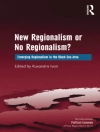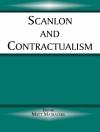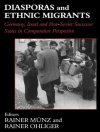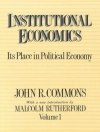In many ways, the European welfare state constituted a response to the new forms of social fracture and economic turbulence that were born out of industrialization—challenges that were particularly acute for groups whose integration into society seemed the most tenuous. Covering a range of national cases, this volume explores the relationship of weak social ties to poverty and how ideas about this relationship informed welfare policies in the nineteenth and twentieth centuries. By focusing on three representative populations—neglected children, the homeless, and the unemployed—it provides a rich, comparative consideration of the shifting perceptions, representations, and lived experiences of social vulnerability in modern Europe.
表中的内容
Illustrations
Figures and Tables
Introduction: Poverty and Endangered Social Ties: An Introduction
Beate Althammer and Tamara Stazic-Wendt
Chapter 1. Poverty and Social Bonds: Towards a Theory of Attachment Regimes
Serge Paugam
PART I: ENDANGERED CHILDHOODS
Chapter 2. Living at the Edge of Society: Wallchian Orphans in Nineteenth-Century Bucharest
Nicoleta Roman
Chapter 3. Orphans, Pauper Children or Wayward Children? The Lives of Children Cared for by Public Institutons in Hamburg, 1892-1914
Katharina Brandes
Chapter 4. The Reduction of Poverty Starts with Children: Swiss Societies for Educating the Poor in the Nineteenth and Twentieth Centuries
Ernst Guggisberg
Chapter 5. Compassion for the Distant Other: Children’s Hunger and Humanitarian Relief in the Aftermath of the Great War
Frederike Kind-Kovács
PART II: VAGRANCY AND HOMELESSNESS
Chapter 6. Traditional Mobility and Solidarity in Crisis: Jeremias Gotthelf’s Response to Pauperism in the Vormärz
Andrew Cusack
Chapter 7. Controlling Vagrancy: Germany, England and France, 1880-1914
Beate Althammer
Chapter 8. The Prolbem of Homelessness in Postwar Britain
Tehila Sasson
PART III: UNEMPLOYMENT
Chapter 9. ‘United Idle Men with Idle Land’: The Evolution of the Hollesley Bay Training Farm Experiment for the London Unemployed, 1905-1908
Elizabeth A. Scott
Chapter 10. An Unbearable Social Existence: The Unemployed in Rural Poor Relief (Germany, 1918-1933)
Tamara Stazic-Wendt
Chapter 11. How Unemployment was Normalized by the Establishment of Public Labour Exchanges in Austria, 1918-1938
Irina Vana
Chapter 12. The Poor Unemployed: Diagnoses of Unemployment in Britain and West Germany in the 1970s and 1980s
Wiebke Wiede
PART IV: RE-ESTABLISHING SOCIAL TIES: NARRATIVES AND APPEALS FROM THE POOR
Chapter 13. Voices from the Lower Depths: Russian Poor in Their Own Words
Hubertus Jahn
Chapter 14. ‘They Sit for Days and Have Only Their Sorrow to Eat’: Old Age Poverty in German and British Pauper Narratives
Andreas Gestrich and Daniela Heinisch
Chapter 15. Seen With Their Own Eyes: Self-Presentation of the Poor in Freiburg and Schwerin, 1950-1975
Dorothee Lürbke
Conclusion: The Twisted Paths of Recognition and Protection: Vulnerability and Welfare in European Societies
Lutz Raphael
Bibliography
Index
关于作者
Tamara Stazic-Wendt is a doctoral student at the University of Trier and is currently completing her dissertation on unemployment in rural Germany during the interwar period. Her recent publications include “The ‘New Morocco’ Settlement between Trier and Euren, Germany: Drawing Boundaries and Constructing Deviance, 1925-1933” in The Welfare State and the “Deviant Poor” in Europe, 1870-1933 (2014).












